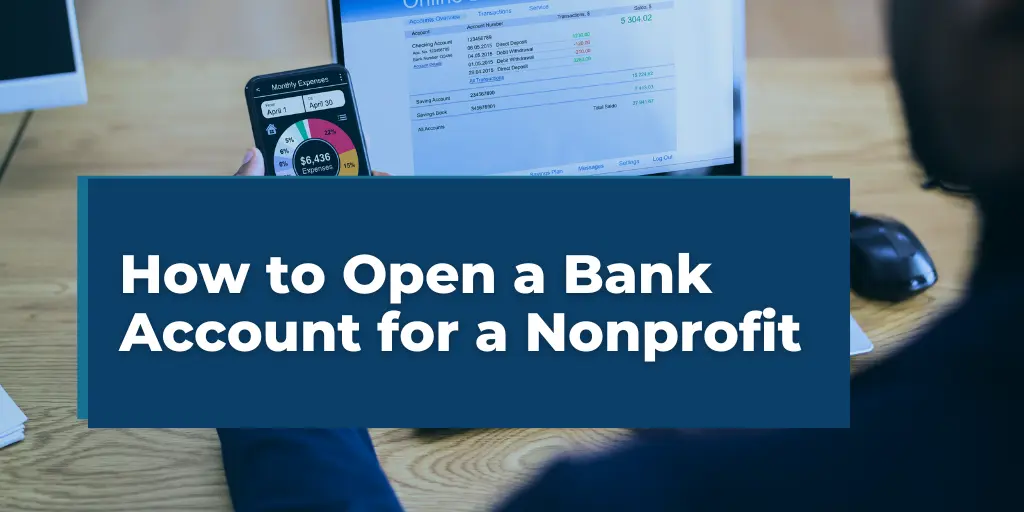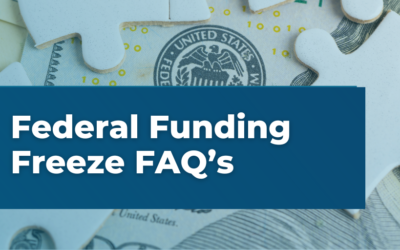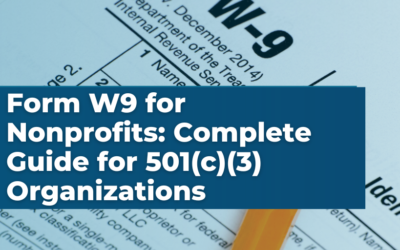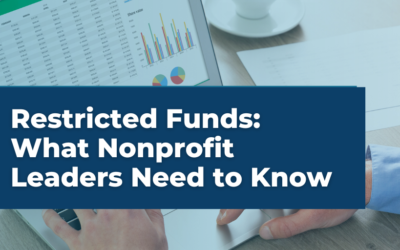A Step-by-Step Guide to Setting Up a Bank Account for Your Nonprofit Organization
(Updated January 23, 2025)
Opening a bank account is a crucial step for any nonprofit organization. It establishes financial credibility and aids in efficient money management. Whether you’re new or organizing your finances, you need to know how to set up a nonprofit bank account. This is essential for managing your nonprofit’s money properly.
This guide will walk you through the necessary steps and considerations. By the end, you’ll know how to open a bank account for your nonprofit. This will help build a strong foundation for your mission.
Why a Bank Account is Essential for Nonprofits
Trust and Credibility
Having a dedicated bank account for your nonprofit organization is vital for building trust and credibility. Here’s why:
- Transparency: Shows donors that funds are handled responsibly and used solely for the organization’s mission.
- Professionalism: Demonstrates that your nonprofit is serious about financial management.
- Trust: Increases confidence among potential donors, grant-making bodies, and other stakeholders.
Financial Management
Effective financial management is another key reason for opening a nonprofit bank account. Benefits include:
- Separation of Funds: Keeps your nonprofit’s funds separate from personal finances, making tracking easier.
- Simplified Bookkeeping: Easier to manage income, expenses, and donations.
- Tax Exempt Compliance: Simplifies tax filing and ensures compliance with state and federal regulations. This is important for maintaining tax exempt status.
- Online Banking Tools: Utilize automated payments and detailed transaction histories for streamlined management.
- Strategic Planning: Supports long-term financial health and strategic planning.
By opening a bank account, your nonprofit can build trust, ensure transparency, and manage finances effectively.
Pre-Preparation Steps
Before opening a bank account for your nonprofit, it’s important to prepare thoroughly. Here are the key steps:
Determine Your Needs
Identify what your nonprofit needs in a bank account:
- Types of Accounts: Consider business checking, savings, or both.
- Features: Look for features like online banking, low fees, and easy access to funds.
- Services: Identify any additional services you might need, such as credit card processing or loans.
Research Banks
Find a bank that fits your nonprofit’s needs:
- Local vs. National Banks: Compare the benefits of local community banks versus larger national banks.
- Nonprofit-Friendly Banks: Look for banks that offer special accounts or services for nonprofits.
- Compare Fees: Check for account fees, minimum balance requirements, and transaction limits.
- Reputation and Reviews: Read reviews and ask other nonprofits about their banking experiences.
Proper preparation will help you choose the right bank and account for your nonprofit’s unique needs.
Gather Required Documents
Before heading to the bank, make sure you have all the necessary documents. Here’s what you’ll need:
Nonprofit Incorporation Documents
- Articles of Incorporation: Officially register your nonprofit with the state.
- Bylaws: Outline the rules and procedures for operating your nonprofit.
EIN (Employer Identification Number)
- Obtain an EIN: Get an Employer Identification Number from the IRS. This is like a Social Security number for your nonprofit.
- IRS Website: You can apply for an EIN online through the IRS website.
Board Resolution
- Authorization: A board resolution authorizing the opening of the bank account, signed by board members.
- Details: Should include the names of the individuals authorized to manage the account.
Identification
- Personal ID: Government-issued identification (e.g., driver’s license, passport) for each person authorized to use the account.
- Proof of Address: Utility bills or other documents showing your nonprofit’s address.
Having all these documents ready will streamline the process of opening your nonprofit’s bank account.
Choosing the Right Bank
Selecting the right bank is crucial for your nonprofit’s financial health. Consider these factors when making your decision:
Consider Local vs. National Banks
Local Banks:
- Community Focus: Often have a strong commitment to local community organizations.
- Personalized Service: May offer more personalized customer service.
- Accessibility: Typically easier to reach in person.
National Banks:
- Widespread Access: More branches and ATMs nationwide.
- Advanced Technology: Usually offer more advanced online and mobile banking services.
- Resources: Often have more resources and specialized nonprofit banking options.
Nonprofit-Friendly Banks
- Special Accounts: Look for banks that offer accounts specifically designed for nonprofits.
- Reduced Fees: Some banks waive fees for nonprofits or offer lower fees.
- Additional Services: Banks that understand nonprofit needs may offer helpful services like donation processing.
Fees and Services
When choosing a bank, it’s important to consider how well it supports your accountant and the nonprofit’s accounting needs.
- Compare Fees: Check for monthly maintenance fees, transaction fees, and minimum balance requirements.
- Services:
- Online Banking: Ease of access and management.
- Merchant Services: For processing donations and payments.
- Loans and Credit: Availability of loans or credit lines for nonprofits.
- Online Services: Ensure the bank has good online services, including the ability to see images of checks and deposits. This is often weaker with local community banks and credit unions.
- Accounting System Integration: Check if the bank account can connect to your accounting system (e.g., QuickBooks). This feature is also typically weaker with smaller community banks and credit unions.
Reputation and Reviews
- Research: Look for reviews and testimonials from other nonprofits.
- Recommendations: Ask other nonprofit leaders about their banking experiences.
Choosing the right bank involves considering both your immediate needs and long-term goals. Make sure to select a bank that aligns with your nonprofit’s mission and financial requirements.
The Account Opening Process
After choosing the right bank and collecting all required documents, you can open your nonprofit’s bank account. Follow these steps:
In-Person vs. Online
In-Person:
- Appointment: Schedule an appointment with a banker to discuss your needs.
- Documents: Bring all required documents to the meeting.
- Personal Interaction: Benefit from face-to-face interaction for any questions or concerns.
Online:
- Convenience: Some banks offer the option to open an account online.
- Document Upload: Prepare to upload digital copies of your required documents.
- Quick Process: Often faster and more convenient than in-person visits.
Meeting with a Banker
- Preparation: Bring all necessary documents and a list of any questions.
- Discussion Points:
- Account Options: Ask about the different account types and their features.
- Fees and Requirements: Clarify any fees, minimum balances, and transaction limits.
- Additional Services: Inquire about additional services like online banking, credit cards, and merchant services.
Review and Sign Documents
- Account Agreement: Carefully read the account agreement, noting any fees or restrictions.
- Signatures: Ensure all authorized signers are present to sign the necessary documents.
- Copies: Request copies of all signed documents for your records.
Opening the account can be straightforward if you’re well-prepared and understand the process. Taking these steps ensures that your nonprofit’s banking setup is smooth and efficient.
Initial Deposit and Ongoing Management
After your account is open, the next steps involve making the initial deposit and managing your account effectively. Here’s what you need to do:
Making the Initial Deposit
- Minimum Requirements: Be aware of any minimum deposit requirements set by the bank.
- Deposit Methods: Use cash, checks, or electronic transfers to make your initial deposit.
- Confirmation: Ensure you receive a confirmation receipt or acknowledgment of your deposit.
Record Keeping
- Transaction Records: Keep detailed records of all transactions, including deposits, withdrawals, and transfers.
- Bank Statements: Regularly review your bank statements to ensure accuracy and monitor account activity.
- Receipts: Save all receipts and documentation for donations, payments, and expenses.
Regular Review
- Monthly Reconciliation: Reconcile your bank account monthly to ensure your records match the bank’s statements.
- Budget Monitoring: Regularly compare your actual income and expenses to your budget to stay on track financially.
- Annual Audit: Consider conducting an annual audit to ensure compliance and accuracy in your financial reporting.
Online Banking Tools
- Access and Manage: Utilize online banking tools for easy access and management of your account.
- Automated Payments: Set up automated payments for recurring expenses to save time and avoid missed payments.
- Alerts: Set up account alerts for low balances, large transactions, or suspicious activity to stay informed.
Building a Relationship with Your Bank
- Regular Communication: Maintain regular communication with your bank representative to stay informed about new services or changes.
- Financial Advice: Seek financial advice from your banker when needed to make informed decisions.
- Feedback: Provide feedback to your bank about their services to help them better serve your nonprofit.
Effective management of your nonprofit’s bank account ensures financial stability and supports your nonprofit’s mission. By staying organized and proactive, you can make the most of your banking relationship.
Conclusion
Opening and managing a bank account is important for your nonprofit’s stability and credibility. To succeed, gather the necessary documents, choose the right bank, understand the account opening process, and implement best practices. These steps will help ensure your nonprofit’s financial success.
Proper financial management builds trust with donors and stakeholders while supporting your nonprofit’s mission and growth. A dedicated bank account aids in transparency, simplifies bookkeeping, and ensures regulatory compliance.
Start today by setting up a bank account and laying a solid financial foundation for your nonprofit. For more guidance or specific questions, contact Velu. We are here to help your nonprofit thrive.





